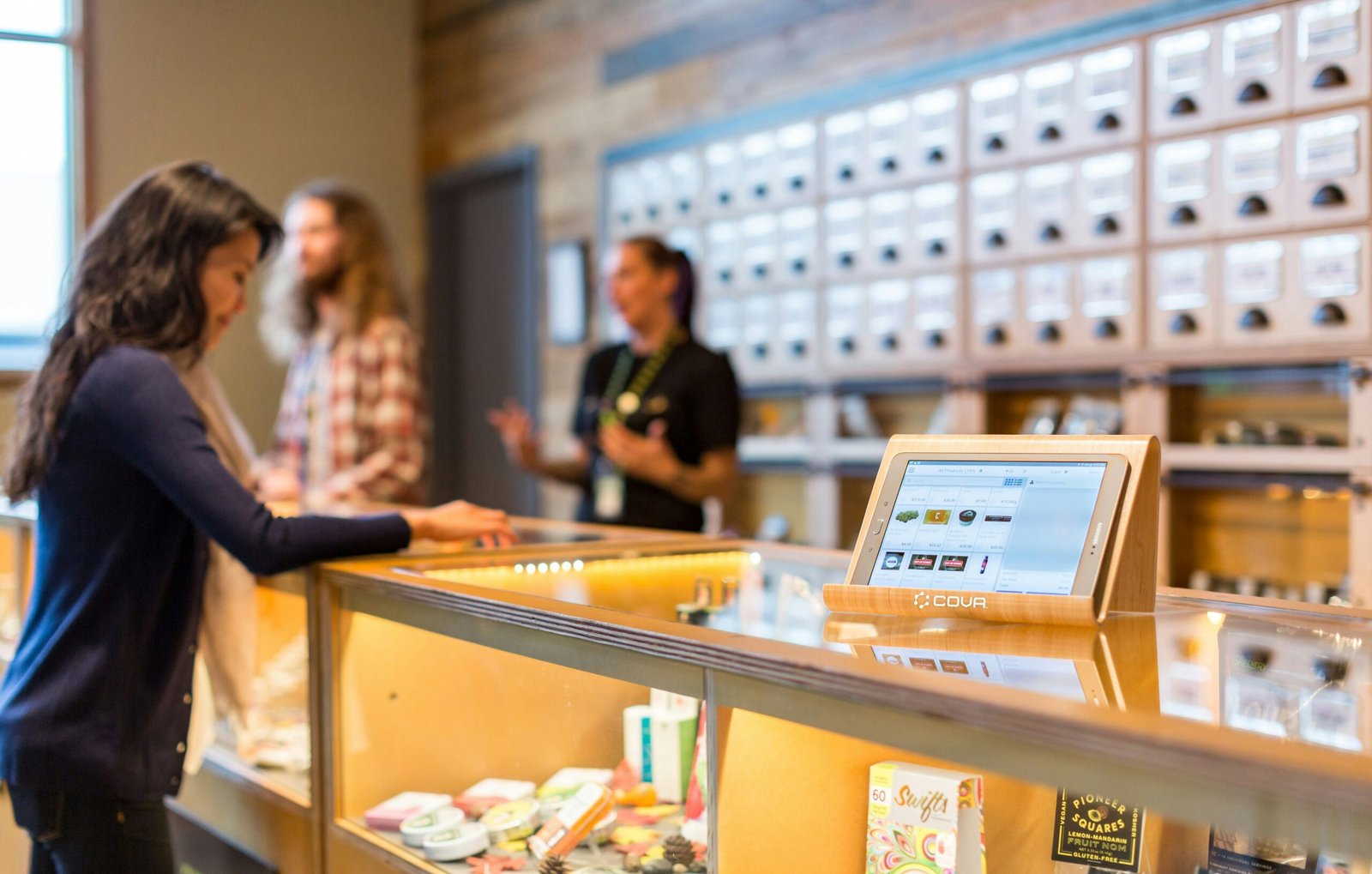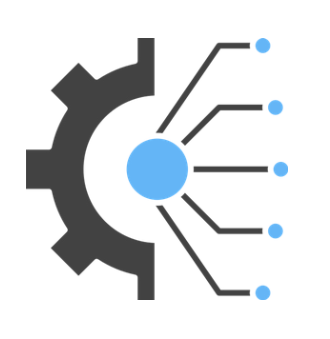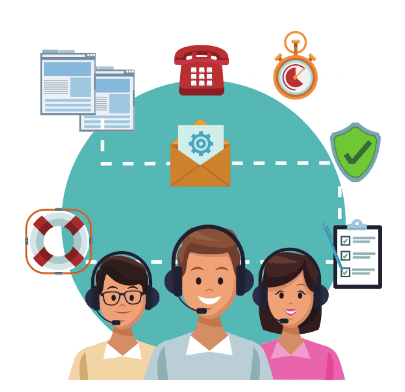
Introduction
When it comes to choosing a restaurant POS software, affordability is a key factor to consider. Small and medium-sized restaurants often have limited budgets, and investing in an expensive POS system may not be feasible. Fortunately, there are affordable options available that can provide all the necessary features without breaking the bank.
Benefits of an Affordable Restaurant POS Software
An affordable restaurant POS software offers a range of benefits that can greatly enhance your business operations. Firstly, it allows you to efficiently manage your inventory. With a POS system in place, you can easily track the ingredients and supplies used in your dishes, ensuring that you never run out of essential items. This not only saves time but also prevents any potential loss of revenue due to inventory mismanagement.

Additionally, an affordable POS software enables you to streamline your order management process. It allows your staff to quickly and accurately take orders, which are then sent directly to the kitchen. This eliminates the need for manual order taking and reduces the chances of errors or miscommunication. As a result, your customers receive their food promptly, leading to increased customer satisfaction and repeat business.
Furthermore, an affordable POS system provides detailed reporting and analytics capabilities. It generates comprehensive reports on sales, inventory, and customer data, giving you valuable insights into your business performance. This information can help you make informed decisions regarding menu changes, pricing strategies, and marketing campaigns. By analyzing the data provided by the POS software, you can identify trends, identify areas for improvement, and ultimately increase your profitability.
Another advantage of an affordable restaurant POS software is its integration capabilities. It can easily integrate with other essential systems such as accounting software, online ordering platforms, and loyalty programs. This seamless integration eliminates the need for manual data entry and ensures that all your systems work together harmoniously. This not only saves time but also reduces the chances of errors and enhances overall efficiency.
Factors to Consider When Choosing Affordable Restaurant POS Software
When it comes to choosing the right affordable restaurant POS software, there are several factors that you need to consider. These factors will help you make an informed decision and ensure that the software you choose meets the specific needs of your restaurant. Let’s take a look at some of these factors:
1. Cost
One of the most important factors to consider when choosing affordable restaurant POS software is the cost. You need to determine your budget and find a software solution that fits within that budget. Keep in mind that while affordability is important, you should also consider the value for money. Look for software that offers a good balance between cost and features.
2. Features
Another crucial factor to consider is the features offered by the POS software. Different restaurants have different needs, so it’s important to choose software that has the features that are essential for your business. Some common features to look for include order management, inventory tracking, table management, reporting and analytics, and integration with other systems such as online ordering platforms and accounting software.
3. Ease of Use
The last thing you want is to invest in a restaurant POS software that is difficult to use. Look for software that has a user-friendly interface and intuitive navigation. It should be easy for your staff to learn and use the software without extensive training. This will save you time and money in the long run.
4. Scalability
As your restaurant grows, you may need to expand your operations or open new locations. It’s important to choose a POS software that can scale with your business. Look for software that can handle a higher volume of orders and can be easily integrated with additional hardware and software as needed.
5. Customer Support
When something goes wrong with your POS software, you need to have reliable customer support to help you resolve the issue quickly. Look for software providers that offer 24/7 customer support and have a good reputation for providing timely and effective assistance.
6. Security
With the increasing threat of cyber attacks, it’s essential to choose a restaurant POS software that prioritizes security. Look for software that offers encryption and data protection measures to ensure that your customers’ payment information is safe and secure.
By considering these factors, you can narrow down your options and choose the best affordable restaurant POS software for your business. Remember, investing in the right software can have a significant impact on the success and efficiency of your restaurant operations.
Additional Benefits of a Restaurant POS Software
1. Streamlined Staff Management

In addition to automating tasks like employee scheduling, a restaurant POS software can also help you manage your staff more efficiently. You can easily track employee hours, calculate wages, and generate payroll reports. This eliminates the need for manual calculations and reduces the chances of errors in payroll processing.
2. Increased Security
With a restaurant POS system, you can enhance the security of your business operations. Most POS software offers features like user access controls and encrypted payment processing, which help protect sensitive customer data and prevent unauthorized access. This ensures that your customers’ personal and financial information is kept safe and secure.
3. Seamless Integration

A good POS software should be able to integrate with other systems and applications that you use in your restaurant. This includes accounting software, online ordering platforms, and loyalty programs. By integrating these systems, you can streamline your operations, improve efficiency, and provide a seamless experience for both your staff and customers.
4. Cost Savings

While investing in a restaurant POS software may seem like an upfront cost, it can actually lead to long-term cost savings. By automating tasks, reducing errors, and improving efficiency, you can save on labor costs and minimize financial losses due to mistakes. Additionally, with better inventory management and reporting, you can optimize your purchasing decisions and avoid unnecessary expenses.
5. Scalability

A restaurant POS system should be able to grow with your business. Whether you have a single location or multiple branches, a scalable POS software can accommodate your needs. It should offer features like centralized management, real-time reporting across locations, and the ability to add new terminals easily. This ensures that your POS system can adapt to your changing requirements as your business expands.
Are you looking for Best Affordable Restaurant POS Software ? Try this Solution. Click Here
Tips for Choosing an Affordable Restaurant POS Software

1. Determine Your Needs
Before you start looking for a restaurant POS software, it’s important to determine your specific needs and requirements. Consider the size of your restaurant, the number of employees, and the type of cuisine you serve. Do you need table management features? Do you require integration with online ordering platforms? Make a list of the features that are essential for your business.
Once you have identified your needs, it’s time to prioritize them. Think about which features are absolutely necessary for your restaurant to function smoothly and efficiently. For example, if you have a large restaurant with multiple dining areas, table management features may be critical for optimizing seating arrangements and minimizing wait times. On the other hand, if you primarily offer takeout or delivery services, online ordering integration may be a top priority.
Consider the specific challenges and pain points your restaurant is facing. Are you struggling with inventory management? Are you finding it difficult to track employee performance and hours? Identifying these pain points will help you determine which features are most important for addressing them. For instance, if inventory management is a major concern, you may want to prioritize a POS system that offers robust inventory tracking and reporting capabilities.
It’s also important to think about scalability. As your restaurant grows and evolves, your needs may change. Consider whether the POS software you choose has the flexibility to adapt to your future requirements. Will it be able to accommodate an increase in the number of users or locations? Can it handle additional features or integrations as your business expands? These are important factors to consider when determining your needs.
By taking the time to carefully assess your needs and prioritize them, you can ensure that you choose a restaurant POS software that is tailored to your specific requirements. This will not only help you streamline your operations and improve efficiency but also save you time and money in the long run.
When setting a budget for your restaurant POS software, it’s crucial to consider various factors that will impact the overall cost and value of the system. One important consideration is the size and complexity of your restaurant operation. If you run a small, casual eatery with a limited menu and a handful of tables, you may not require a high-end, feature-rich POS system. In this case, a more affordable option with basic functionalities may suffice.
On the other hand, if you operate a large, upscale restaurant with multiple dining areas, a diverse menu, and a high volume of customers, investing in a robust POS system becomes imperative. These advanced systems offer a wide range of features such as table management, reservation systems, inventory tracking, and integration with other software solutions like accounting or customer relationship management (CRM) systems.
While these systems may come with a higher price tag, they can significantly streamline your operations, enhance customer experience, and provide valuable insights through detailed reporting and analytics.
Another factor to consider when budgeting for a restaurant POS system is scalability. As your business grows, you may need to add more terminals, integrate additional hardware like kitchen display systems or self-ordering kiosks, or expand the software’s capabilities to accommodate new requirements.
Therefore, it’s essential to choose a POS system that allows for easy scalability without incurring exorbitant costs in the future.
Furthermore, it’s important to consider the total cost of ownership (TCO) when setting a budget for your restaurant POS software. TCO includes not only the upfront costs of purchasing or leasing the system but also ongoing expenses such as software updates, maintenance, and technical support.
Opting for a reputable POS provider with a proven track record of excellent customer support can save you from potential headaches and additional costs down the line.
Lastly, don’t forget to consider the potential cost savings that a restaurant POS system can offer. By automating various tasks, reducing human error, improving efficiency, and providing real-time data, a well-implemented POS system can help you save money in the long run.
For example, inventory management features can prevent overstocking or understocking, leading to reduced food waste and improved profitability. Similarly, accurate reporting and analytics can identify areas of improvement in your operations, allowing you to make data-driven decisions that optimize your business’s performance.
In conclusion, while affordability is an important aspect when setting a budget for your restaurant POS software, it’s essential to consider the specific needs of your business, the scalability of the system, the total cost of ownership, and the potential cost savings it can provide.
By carefully evaluating these factors, you can make an informed decision and invest in a POS system that not only fits your budget but also enhances your restaurant’s efficiency, profitability, and overall success.
3. Research and Compare Options
Once you have determined your needs and set a budget, start researching and comparing different restaurant POS software options. Look for software that has positive reviews and a good reputation in the industry.
Check if the software offers the features you require and if it is user-friendly. Consider factors such as ease of use, customer support, and scalability.
One important aspect to consider when researching restaurant POS software options is the integration capabilities. You want to ensure that the software you choose can seamlessly integrate with your existing systems, such as your accounting software or online ordering platform.
This will save you time and effort in the long run, as you won’t have to manually transfer data between different systems.
Another factor to consider is the level of customization that the software offers. Every restaurant is unique, and you may have specific requirements that need to be met.
Look for software that allows you to customize menus, layouts, and reports to suit your specific needs. This will ensure that the software adapts to your business, rather than the other way around.
It is also important to consider the pricing structure of the software. Some POS software providers charge a monthly subscription fee, while others may require an upfront payment or charge a percentage of your sales.
Take the time to calculate the total cost of ownership over a certain period of time to determine which option is the most cost-effective for your restaurant.
When comparing different software options, don’t forget to take into account the reputation and track record of the provider. Look for a company that has been in the industry for a while and has a proven track record of delivering reliable and innovative solutions.
Check if they have a dedicated customer support team that can assist you in case of any issues or questions.
Finally, consider the scalability of the software. As your restaurant grows, you may need to add new locations or expand your operations. Make sure that the software you choose can easily scale with your business without any major disruptions or additional costs.
In conclusion, researching and comparing different restaurant POS software options is an essential step in finding the right solution for your business.
Take the time to carefully evaluate each option based on factors such as integration capabilities, customization, pricing, reputation, and scalability.
By doing so, you can ensure that you choose a software that meets your specific needs and helps streamline your restaurant operations.
Are you Jobseeker ? Here we have list of best jobs for you. Checkout here
4. Look for Cloud-Based Solutions

Cloud-based restaurant POS software has become increasingly popular in recent years. These solutions offer several advantages over traditional on-premise systems.
They are more affordable, as you don’t need to invest in expensive hardware or servers. They also provide real-time data and remote access, allowing you to manage your restaurant from anywhere. Consider opting for a cloud-based solution to save costs and improve flexibility.
One of the key benefits of cloud-based solutions is their cost-effectiveness. With traditional on-premise systems, you would need to purchase expensive hardware and servers,
which can put a strain on your budget. In contrast, cloud-based solutions operate on a subscription-based model, where you pay a monthly or annual fee for access to the software.
This eliminates the need for upfront hardware investments and reduces your overall IT costs.
Another advantage of cloud-based POS software is the real-time data it provides. With traditional systems, you often have to wait for end-of-day reports to get a comprehensive view of your restaurant’s performance.
However, with cloud-based solutions, you can access up-to-date information on sales, inventory, and customer data in real-time. This allows you to make informed decisions on the fly and respond quickly to changing market conditions.
Furthermore, cloud-based solutions offer the convenience of remote access. As a restaurant owner or manager, you may not always be physically present at your establishment. Whether you’re attending a conference, on vacation, or simply want to keep an eye on things from home, cloud-based POS software allows you to monitor and manage your restaurant remotely.
You can access sales data, update menus, and even process orders from any internet-connected device, giving you the freedom and flexibility to run your business on your own terms.
Security is another aspect to consider when looking for a POS solution, and cloud-based systems often offer robust security measures. Reputable cloud-based providers employ advanced encryption technologies to protect your data, ensuring that it remains safe and secure.
Additionally, they often have backup systems in place to prevent data loss in case of hardware failure or other unforeseen circumstances.
In conclusion, cloud-based restaurant POS software offers a cost-effective, real-time, and flexible solution for managing your restaurant. By opting for a cloud-based system, you can save on upfront hardware costs, access up-to-date data, and manage your business remotely.
Additionally, the security measures provided by reputable cloud-based providers ensure the safety of your data. Consider exploring cloud-based solutions to streamline your restaurant operations and stay ahead in the competitive food industry.
5. Consider Integration

Integration with other systems is an important factor to consider when choosing a restaurant POS software. Look for software that can seamlessly integrate with your existing systems, such as accounting software, online ordering platforms, and inventory management systems.
This will help streamline your operations and avoid the need for manual data entry.
When it comes to running a restaurant, efficiency is key. The ability to integrate your POS software with other systems can greatly enhance your operations and save you time and effort.
For example, if your accounting software is already in place, finding a POS system that integrates with it will allow for automatic syncing of financial data.
This means that you won’t have to manually enter sales data into your accounting software, reducing the risk of errors and saving you valuable time.
Similarly, integrating your POS software with online ordering platforms can be a game-changer for your restaurant. With more and more customers opting to order food online, having a seamless integration between your POS system and these platforms can help streamline the order-taking process.
Orders can be automatically sent to your POS system, eliminating the need for manual entry and reducing the chances of mistakes. This not only improves efficiency but also enhances the customer experience by ensuring accurate and timely order processing.
Furthermore, integration with inventory management systems can greatly benefit your restaurant’s operations. By connecting your POS software with your inventory management system, you can automatically track inventory levels and receive alerts when certain items are running low.
This enables you to efficiently manage your stock, avoid stockouts, and ensure that you always have the necessary ingredients on hand to fulfill customer orders.
Additionally, integration with inventory management systems can provide valuable insights into your restaurant’s purchasing patterns and help optimize your supply chain.
When evaluating restaurant POS software options, it’s important to inquire about the integration capabilities of each system.
Ask the software provider which systems they can integrate with and how the integration process works. Look for software that offers a wide range of integration options and has a proven track record of successful integrations with other systems.
In conclusion, considering integration when choosing a restaurant POS software is crucial for optimizing your operations and maximizing efficiency.
By selecting a software that seamlessly integrates with your existing systems, you can automate processes, reduce manual data entry, and improve accuracy.
This not only saves time and effort but also enhances the overall customer experience. So, be sure to carefully evaluate the integration capabilities of each POS software option before making a decision.
6. Evaluate Customer Support

Good customer support is crucial when it comes to restaurant POS software. Look for a software provider that offers reliable customer support, including phone, email, and live chat options.
Check if they have a dedicated support team to assist you in case of any issues or technical difficulties. It’s also a good idea to read reviews or ask for recommendations from other restaurant owners about the customer support provided by the software provider.
Having a reliable customer support system in place is essential for any business, and the restaurant industry is no exception. When you invest in a restaurant POS software, you want to ensure that you have access to prompt and effective support whenever you need it.
One of the key aspects to consider when evaluating customer support is the availability of different communication channels. A software provider that offers phone, email, and live chat options can provide you with various ways to reach out for assistance.
This is particularly important because different situations may require different modes of communication. For urgent issues, having the option to call and speak directly with a support representative can be invaluable.
On the other hand, for less pressing matters, email or live chat may be more convenient. Another crucial factor to consider is the responsiveness of the support team. A dedicated support team that is readily available to address your concerns can make a significant difference in resolving any issues or technical difficulties that may arise.
Look for a software provider that guarantees a quick response time and has a track record of providing timely and efficient support. To gain further insights into the quality of customer support, it is advisable to read reviews or seek recommendations from other restaurant owners.
Their experiences can provide valuable firsthand information about the level of support provided by the software provider. Positive reviews and recommendations from trusted sources can instill confidence in the reliability and effectiveness of the customer support system.
In conclusion, evaluating customer support is an important step in choosing the right restaurant POS software. Look for a provider that offers multiple communication channels, has a dedicated support team, and has a reputation for providing prompt and efficient assistance. By ensuring that you have reliable customer support, you can have peace of mind knowing that help is just a call, email, or chat away whenever you need it.
7. Take Advantage of Free Trials

Many restaurant POS software providers offer free trials or demos of their software. Take advantage of these offers to test the software and see if it meets your needs. During the trial period, evaluate the software’s features, ease of use, and compatibility with your existing systems. This will give you a better understanding of whether the software is the right fit for your restaurant.
When you sign up for a free trial, you will typically have access to all the features and functionalities of the software for a limited period of time. This allows you to fully explore and test the software in a real-world setting, without committing to a long-term contract or investment.
During the trial period, it is important to make the most of your time and thoroughly evaluate the software. Start by identifying your specific needs and requirements for a POS system. Consider factors such as the size and type of your restaurant, the number of employees, and the volume of transactions you handle on a daily basis.
Once you have a clear understanding of your needs, create a checklist of features that are important to you. This could include inventory management, table management, online ordering capabilities, and reporting functionalities, among others. Use this checklist as a guide during your trial period to ensure that the software meets your specific requirements.
During the trial, take the time to explore all the features and functionalities of the software. Test the user interface and evaluate the ease of use. Consider how intuitive the software is and whether it would require extensive training for your staff to use effectively. Remember, a user-friendly POS system can save you time and money in the long run.
Additionally, assess the compatibility of the software with your existing systems. If you already have hardware such as cash registers, printers, or kitchen display systems, make sure that the POS software is compatible with these devices. This will prevent any compatibility issues or the need for additional investments in new hardware.
Finally, don’t hesitate to reach out to the software provider during the trial period. Ask questions, seek clarification, and address any concerns you may have. This will give you a better understanding of the level of support and customer service you can expect if you choose to invest in the software.
By taking advantage of free trials, you can make an informed decision about which POS software is the best fit for your restaurant. Remember, investing in the right software can streamline your operations, improve efficiency, and ultimately enhance the overall dining experience for your customers.
8. Consider Long-Term Scalability

When choosing a restaurant POS software, it’s important to consider the long-term scalability of your business. Look for software that can grow with your restaurant and accommodate future needs. Consider factors such as the number of users, locations, and additional features you may require as your business expands. Investing in scalable software will save you the hassle of switching to a new system in the future.
One of the key considerations when evaluating the long-term scalability of a restaurant POS software is the number of users it can support. As your business grows, you may need to add more staff members who will require access to the system. Therefore, it is crucial to choose a software that can handle an increasing number of users without compromising its performance. This will ensure that your restaurant operations run smoothly, even during peak hours.
In addition to the number of users, you should also think about the potential expansion of your restaurant to multiple locations. If you have plans to open new branches or franchises in the future, it is essential to select a POS software that can easily integrate and synchronize data across different locations.
This will enable you to have a centralized system for managing all aspects of your business, including inventory, sales, and customer data, regardless of the number of locations you have.
Furthermore, as your restaurant grows, you may find the need for additional features and functionalities to streamline your operations and enhance the customer experience. For example, you might want to implement online ordering, loyalty programs, or advanced reporting capabilities.
Therefore, it is important to choose a POS software that offers a wide range of customizable features and has the flexibility to adapt to your evolving needs. This will allow you to stay competitive in the ever-changing restaurant industry and meet the expectations of your customers.
Investing in scalable software not only saves you the hassle of switching to a new system but also ensures that you get the most value out of your investment. By choosing a POS software that can grow with your business, you can avoid the costly process of migrating data and retraining your staff on a new system.
Additionally, scalable software often comes with ongoing updates and technical support, ensuring that you always have access to the latest features and security enhancements.
In conclusion, when selecting a restaurant POS software, it is crucial to consider the long-term scalability of the system.
By choosing a software that can accommodate the growing needs of your business, such as an increasing number of users, multiple locations, and additional features, you can future-proof your operations and ensure a seamless transition as your restaurant expands. Investing in scalable software is a strategic decision that will contribute to the success and efficiency of your restaurant in the long run.

